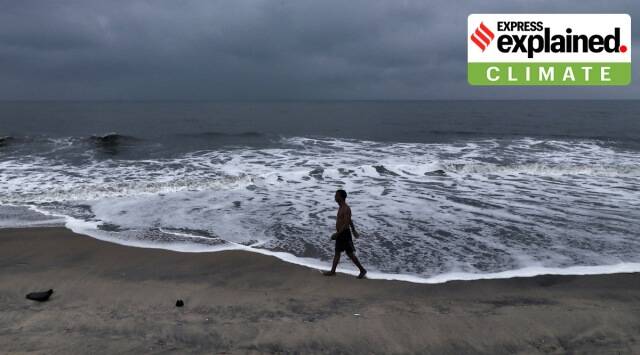What’s in today’s article?
- Why in News?
- About Indian Meteorological Department (IMD)
- Functions of IMD
- IMD’s Predictions on Southwest Monsoon in 2023
- Why the Delay in Southwest Monsoon Isn’t a Cause of Concern?
- Prospects of El Nino
- What is ENSO (El Nino and Southern Oscillation)?
Why in News?
- The Indian Meteorological Department (IMD) has predicted that the arrival of monsoon over the Kerala coast will likely be delayed by a few days.
- Instead of its normal date of June 1, the monsoon is expected to arrive by June 4.
- The IMD said its forecast had an error margin of four days, so a further delay was possible.
About Indian Meteorological Department (IMD)
- India Meteorological Department was established in 1875.
- It is the National Meteorological Service of the country and the principal government agency in all matters relating to meteorology and allied subjects.
- Concerned Ministry: Ministry of Earth Sciences
- Headquarters: New Delhi
Functions of IMD
- To take meteorological observations and to provide current and forecast meteorological information for optimum operation of weather-sensitive activities like agriculture, irrigation, shipping, aviation, offshore oil explorations, etc.
- To warn against severe weather phenomena like tropical cyclones, norwesters, dust storms, heavy rains and snow, cold and heat waves, etc., which cause destruction of life and property.
- To provide meteorological statistics required for agriculture, water resource management, industries, oil exploration and other nation-building activities.
IMD’s Predictions on Southwest Monsoon in 2023
- The Indian Meteorological Department (IMD) has predicted that the arrival of monsoon over the Kerala coast will likely be delayed by a few days.
- The crucial southwest monsoon starts its journey into the Indian subcontinent from the Kerala coast typically around 1 June.
- The southwest monsoon is responsible for bringing more than 75 per cent of India’s annual rainfall.
- The IMD has predicted that rains in the June-September season will be 94% of the long-period average (LPA).
- The LPA is the average rainfall recorded over the country for the period ranging from 1961 to 2010, which is 88 centimetres.
Why the Delay in Southwest Monsoon Isn’t a Cause of Concern?
- The onset of monsoon over the Kerala coast is just a marker of the official beginning of the four-month monsoon season.
- An early or delayed onset over Kerala does not in any way dictate monsoon performance over the rest of the season.
- In fact, the onset over the Kerala coast is not even the start of the monsoon rains over India.
- The Andaman and Nicobar Islands start getting the rains at least two weeks before Kerala does.
Image Caption: Arrival of Monsoon in last 10 years
- The normal arrival dates at different locations in the country are known, but the progression of monsoon does not always follow those dates.
- Late arrival over Kerala sometimes delays the arrival at some other locations as well, but not always.
- In the past five years, only once has the onset over Kerala happened on the normal date, in 2020. But this has no correlation with the amount of rainfall during the monsoon season.
- For example, in 2016, the onset happened on June 8. However, the rainfall that year was 97.5 per cent of the LPA.
Prospects of El Nino
- While the four-day delay in the onset of the monsoon is not of concern, the real worry is the unfolding situation in the equatorial Pacific Ocean.
- Recent forecasts suggest that El Nino is likely to develop earlier than expected.
- El Nino has the effect of suppressing the Indian monsoon rainfall.
What is ENSO (El Nino and Southern Oscillation)?
Image Caption: ENSO Phenomenon
- ENSO is one of the most important climate phenomena on earth due to its ability to change the global atmospheric circulation, which in turn, influences temperature and precipitation across the globe.
- Though ENSO is a single climate phenomenon, it has three states, or phases, it can be in:
- El Nino:
- A warming of the ocean surface, or above-average sea surface temperatures (SST), in the central and eastern tropical Pacific Ocean.
- It is associated with lower than normal monsoon rainfall in India.
- La Nina:
- A cooling of the ocean surface, or below-average SSTs, in the central and eastern tropical Pacific Ocean.
- It is associated with a comparatively better monsoon rainfall in India.
- Neutral:
- Neither El Nino nor La Nina.
- Often tropical Pacific SSTs are generally close to average.
- El Nino:
Q1) What is Indian Ocean Dipole?
The Indian Ocean Dipole (IOD) is defined by the difference in sea surface temperature between two areas (or poles, hence a dipole) – a western pole in the Arabian Sea (western Indian Ocean) and an eastern pole in the eastern Indian Ocean south of Indonesia. It is a significant contributor to rainfall variability in this region.
Q2) What are Tradewinds?
The trade winds or easterlies are the permanent east-to-west prevailing winds that flow in the Earth’s equatorial region.
Last updated on January, 2026
→ Check out the latest UPSC Syllabus 2026 here.
→ Join Vajiram & Ravi’s Interview Guidance Programme for expert help to crack your final UPSC stage.
→ UPSC Mains Result 2025 is now out.
→ UPSC Notification 2026 is scheduled to be released on January 14, 2026.
→ UPSC Calendar 2026 has been released.
→ UPSC Prelims 2026 will be conducted on 24th May, 2026 & UPSC Mains 2026 will be conducted on 21st August 2026.
→ The UPSC Selection Process is of 3 stages-Prelims, Mains and Interview.
→ Prepare effectively with Vajiram & Ravi’s UPSC Prelims Test Series 2026 featuring full-length mock tests, detailed solutions, and performance analysis.
→ Enroll in Vajiram & Ravi’s UPSC Mains Test Series 2026 for structured answer writing practice, expert evaluation, and exam-oriented feedback.
→ Join Vajiram & Ravi’s Best UPSC Mentorship Program for personalized guidance, strategy planning, and one-to-one support from experienced mentors.
→ UPSC Result 2024 is released with latest UPSC Marksheet 2024. Check Now!
→ UPSC Toppers List 2024 is released now. Shakti Dubey is UPSC AIR 1 2024 Topper.
→ Also check Best UPSC Coaching in India



















